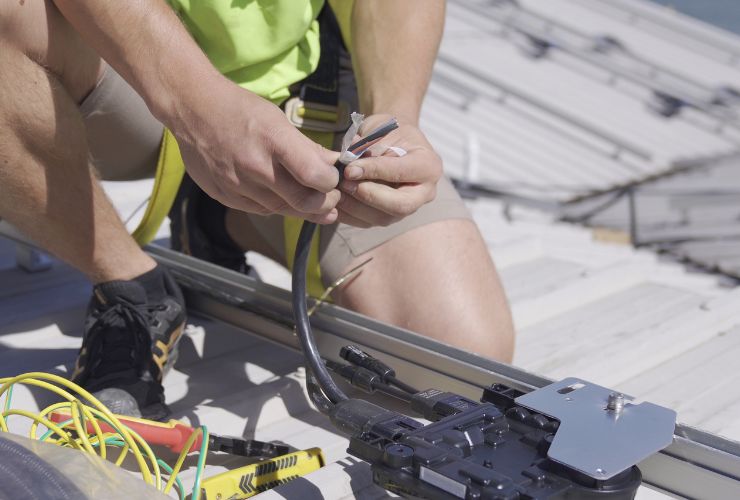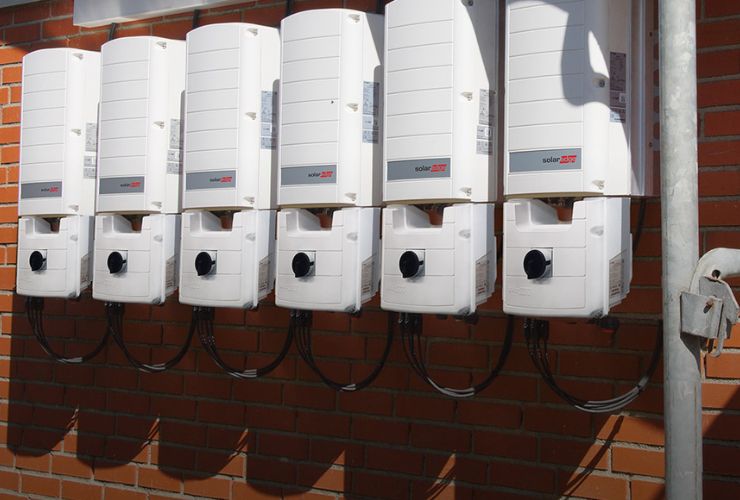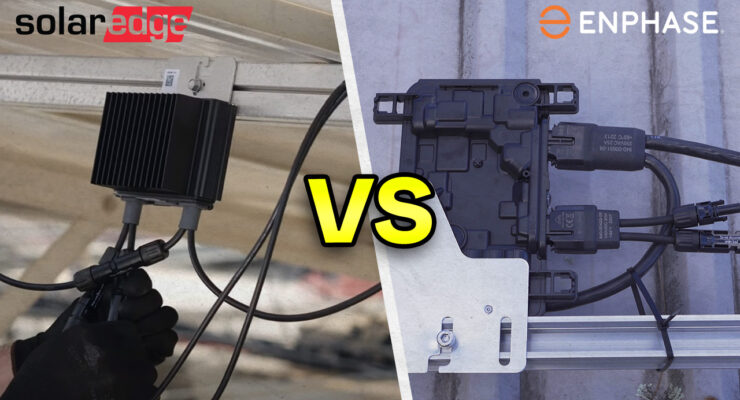Fast read
Sunlight is converted into electricity that your home appliances can use via inverters, which are a critical part of solar systems.
The domestic solar market has seen a rise in popularity for two modern solar technologies: microinverters and power optimizers (MLPEs).
Both technologies can adjust the angle of solar panels without losing efficiency. They can also effectively generate electricity, even when partially shaded.
But the two differ significantly in important ways.
Microinverters and Power Optimisers compared, and which one is better?
Inverters are one of the most essential components of any solar system. Although solar panels convert sunlight into energy, inverters ensure your home appliances can use the energy. Three main types of inverter solutions are available for purchase, these being;
- String Inverters;
- Microinverters; and
- Power Optimisers
The two newer pieces of technology are the microinverter and the DC Power Optimiser, which have been increasing in popularity in recent years, specifically in residential and now increasingly commercial solar markets.
Microinverters and DC Power Optimisers are similar in their technology and processes, called Module-Level Power Electronics (MLPE). However, several differences between them will make them more or less useful for your specific system.
So how exactly do these two pieces of technology work?
What do they do?
Microinverters and DC Power Optimisers have a control/converter unit attached to each panel. They can then communicate to adjust the voltage and current on each panel to maximise the performance of the whole series of panels/systems.
This is in contrast to a string inverter whereby all panels connected in the one string will alter the voltage and current, for example, if shade hits individual panels in the string, leading to energy output losses.

Similarities
- Both of these technologies were created with innovation in mind, allowing the solar system to produce the most electricity even when some panels are shaded during the day;
- The technology permits the installation of solar panels at various angles and differing orientations (E.g. four panels on the North roof, three on the West roof, two on the East roof etc.) that would not be technically workable with pure string inverters;
- You can add a more powerful panel to your solar power system later for growth. This is helpful as panel power classes are always changing. We moved from 300W in 2017 to 430W per panel in 2023;
- If a single panel fails, it does not affect the performance of any other panels. Whereas a single panel failure will affect the performance of the whole string/ series of panels in the case of a string inverter;
- Increases system safety by removing high-voltage DC electricity from the home/ business cables. Whereby 230v AC created by the Enphase technology, for example, is less dangerous;
- They both are more expensive than a string inverter but claim a higher safety and an increase in performance/output;
- Both technologies are installed at the back of a solar panel; and
- They both allow advanced monitoring of the performance of every panel within the system;
- They both have solid and reliable after-sales service.
- Both key brands now offer a battery solution to go with their product.
Differences
The key microinverter brand in Australia is Enphase, and the key Power Optimiser brands are SolarEdge and Tigo. While microinverters and DC power optimisers share some advantages, key distinctions exist between the two advancements.
Conversion of electricity
A key distinction between the two technologies is in how electricity is converted. Microinverters convert DC electricity to AC 230v electricity at the panel’s location. AC electricity from the panel is safer than DC electricity. It flows into your house, reducing the risk of danger.
DC power optimisers are placed under the panel but do not change electricity to AC 230v power on their own. They manage and optimise the DC electricity instead, sending it to a single string style inverter on the side of the house where it is transformed into AC electricity. This control procedure enables the string inverter to convert DC energy into AC energy efficiently.

Inverter warranty
Warranties also vary a little between the two products. For example, the Enphase microinverter warranty in Australia is 10 years but can be upgraded (like most inverters, to 25 years). The Solar Edge Power Optimisers come with a 25-year warranty for the optimiser unit and a 12-year warranty for the inverter unit. These warranties can be extended for a longer period.
Alternative Power Optimise Brand Tigo also offers a 10-year product warranty on their optimisers. Although an extended warranty on the inverter is usually provided, it will come with an additional price.
Therefore, there is no clear ‘winner’ when choosing one or the other. The main factor will be your home’s situation and the system designer involved. Sometimes the solar installer has a specific preference and will explain their reasons.
Installers
The solar industry is currently divided into four groups of installers. The ones who prefer Enphase, the ones who prefer Solar Edge, those who are happy to supply both do not have a preference and installers who strongly prefer string inverters and use Tigo if shade situations occur.
A bit like the Holden versus Ford argument from the past regarding cars. Both fan groups can get extremely passionate and have little tolerance for the other brand. And do not let me start with NRL clubs…
The one myth we seek to dispel is that these two technologies are prone to fast failure. Some people believe that these products will break after a few years. This is because they are placed under a solar module that can reach scorching temperatures during the Australian summer. The temperatures can reach up to 80 or 90 degrees.
However, performance over the past decade has seen both technologies generate outstanding solar output with low warranty returns. This means they can handle the heat for many, many years.
So which one is better – Microinverters or Power Optimisers
Both technologies are efficient and reliable with modern monitoring apps. Your choice will likely be based on your preferences for certain key features.
Also essential to consider that if neither of these technologies tickles your fancy, there is always the trusted string inverter with quality brands like Fronius, Sungrow and SMA.



